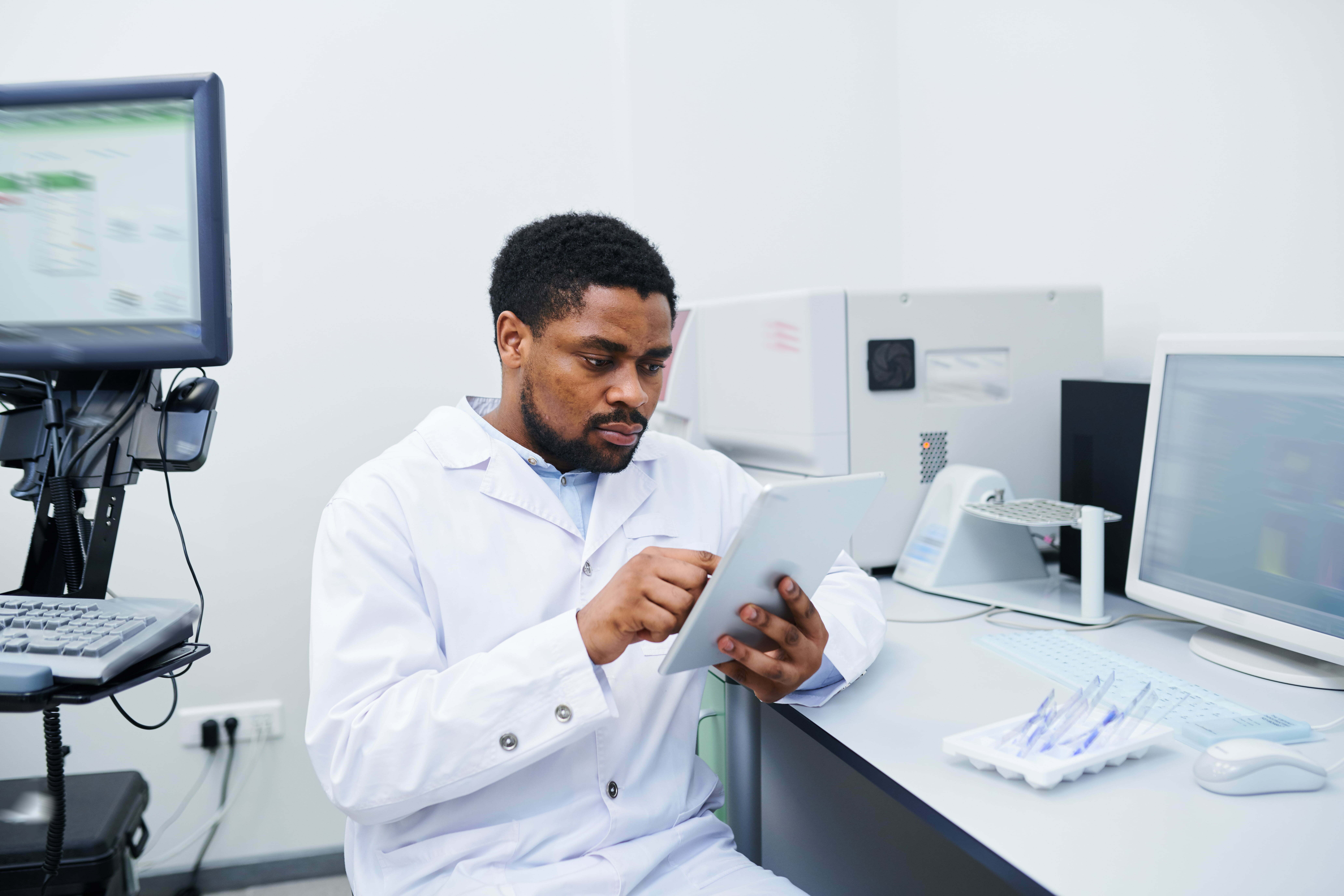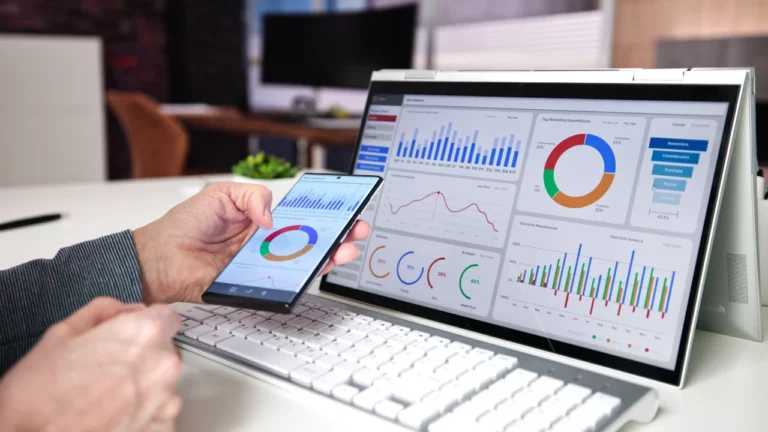As healthcare systems worldwide pivot toward value-based care and proactive patient management, Remote Physiologic Monitoring (RPM) is emerging as a transformative digital health solution. By continuously monitoring patient vitals and biometrics outside of traditional clinical settings, RPM technology empowers healthcare providers to identify health deterioration days, sometimes even weeks, before symptoms become clinically evident.
This proactive approach to remote patient monitoring not only significantly enhances patient outcomes but also reduces healthcare costs, prevents avoidable hospitalizations, and strengthens chronic disease management programs. According to the Centers for Disease Control and Prevention (CDC), chronic conditions are responsible for approximately 90% of the nation’s $4.9 trillion in annual healthcare expenditures. With such a significant portion of healthcare spending dedicated to chronic conditions, early detection through remote patient monitoring (RPM) solutions is no longer optional; it is imperative for efficient and effective patient care.
What is Remote Physiologic Monitoring (RPM) and How Does It Work?
Remote Physiologic Monitoring (RPM) refers to the use of advanced digital technologies to collect and transmit essential health data from patients in real-time, directly from their homes or other non-clinical environments. This typically involves the continuous monitoring of critical vital signs and health metrics such as:
- Blood pressure: For hypertension management and cardiovascular health.
- Heart rate: Detecting arrhythmias or changes in cardiac function.
- Blood glucose levels: Crucial for diabetes management and preventing glycemic crises.
- Oxygen saturation (SpO2): Vital for respiratory conditions like COPD and asthma.
- Respiratory rate: Indicating changes in breathing patterns.
- Body weight: Essential for conditions like heart failure to detect fluid retention.
These metrics are collected using FDA-approved medical devices, which wirelessly transmit data to healthcare providers for continuous, longitudinal evaluation. This real-time health monitoring is particularly useful for patients with chronic diseases like hypertension, diabetes, heart failure, and COPD, enabling continuous chronic care management.
RPM fundamentally differs from traditional episodic care by emphasizing continuous, longitudinal monitoring. This continuous oversight is vital for proactive intervention, enabling earlier detection of subtle health changes and preventing acute health crises that often lead to hospitalizations. This dynamic data stream significantly enhances clinical decision-making and enables early, preventive action, moving healthcare from reactive to proactive.
Why Traditional Healthcare Monitoring Methods Fall Short
Conventional healthcare delivery often relies on scheduled in-office checkups, during which vitals are recorded and treatment is adjusted based on symptoms reported retrospectively by the patient. This reactive model, while standard, carries significant limitations in managing chronic or rapidly changing health conditions:
- Delayed Intervention: Health deterioration, subtle changes, or acute issues may go unnoticed entirely between scheduled clinic visits, leading to delayed or emergency interventions.
- Symptom Underreporting: Patients may not recognize, recall, or accurately report subtle signs and symptoms during a brief office visit, or they may downplay their severity.
- Single Data Point Dependence: Clinical decisions are often made based on isolated readings taken at a single point in time, which can be misleading or fail to capture overall trends.
In stark contrast, remote patient monitoring systems provide a dynamic, continuous stream of data. This allows providers to spot emerging trends, subtle deviations, and potential health crises days or even weeks before a patient experiences acute symptoms, facilitating early clinical intervention.
Early Detection: How RPM Outperforms Traditional Monitoring
Numerous studies and real-world implementations consistently support the assertion that RPM technology can identify signs of patient decline far earlier than conventional, episodic methods. This proactive health monitoring capability is a cornerstone of its value:
- A 2023 study in the Journal of Telemedicine and Telecare demonstrated that RPM effectively detected decompensation in heart failure patients an average of 6.5 days before symptom onset, significantly outperforming traditional in-office assessments.
- According to the Veterans Health Administration (VA), their Remote Patient Monitoring (RPM) initiative has been remarkably successful, showing a significant impact on patient outcomes. Veterans enrolled in the RPM-Home Telehealth program experienced a 41% reduction in hospital admissions. For those who did require hospitalization, the program led to an even greater benefit, with approximately a 70% reduction in the number of days they stayed in the hospital.
- A 2021 Health Affairs report indicated that RPM led to a 76% reduction in readmissions for post-acute patients over a 90-day period.
These compelling results unequivocally demonstrate the clear clinical value of real-time patient surveillance in predicting health decline and supporting earlier, more effective clinical interventions.
The Transformative Role of Artificial Intelligence (AI) in RPM
The integration of Artificial Intelligence (AI) and machine learning into RPM platforms is rapidly enhancing their predictive accuracy and clinical utility. These advanced technologies can analyze vast datasets from multiple patients, identifying subtle patterns and complex correlations that might elude human observation alone, thus greatly augmenting preventive care technologies.
Key advantages of incorporating AI into remote patient monitoring solutions include:
- Predictive Alerts: AI algorithms can flag concerning trends, such as a gradual but persistent increase in resting heart rate or blood glucose levels, days or even weeks before they become clinically symptomatic, enabling highly targeted predictive health analytics.
- Risk Stratification: AI models help healthcare providers efficiently prioritize patients who require urgent attention based on their calculated risk profiles, optimizing workload and resource allocation.
- Decision Support: Clinicians receive evidence-based recommendations and actionable insights, informed by both real-time data and historical patient trends, leading to more precise and personalized treatment plans.
For instance, an AI-powered RPM platform used at Mount Sinai Health System helped identify COVID-19 patients at risk of respiratory failure 24 – 48 hours before clinical symptoms emerged. AI integration has the potential to enhance RPM systems in identifying early signs of health deterioration.
RPM Reduces Healthcare Costs and Prevents Avoidable Hospitalizations
The financial impact of widespread RPM implementation is substantial, positioning it as a cornerstone of value-based care models.
- According to a report by Deloitte, widespread implementation of RPM across just four common chronic conditions, hypertension, diabetes, congestive heart failure (CHF), and COPD, could save the U.S. healthcare system up to $200 billion over 25 years.
- A CMS study on RPM reimbursement programs found that participants utilizing RPM had 50% fewer readmissions compared to non-users, highlighting its effectiveness in reducing costly re-hospitalizations.
- Medical providers also benefit from enhanced reimbursement models, with Medicare covering specific CPT codes for RPM setup, data collection, analysis, and patient communication, making these services financially viable.
For healthcare systems under increasing financial pressure, RPM offers both powerful clinical efficacy and robust fiscal sustainability, representing a strategic investment in cost-effective healthcare solutions.
Empowering Patients Through Real-Time Engagement
RPM fundamentally empowers patients to take more active ownership of their health. It transforms them from passive recipients of care into active participants in their own well-being, fostering a stronger sense of patient self-management and autonomy.
Key benefits for patients include:
- Immediate Feedback: Patients gain real-time understanding of how their lifestyle choices, diet, and medications directly affect their vital signs and overall health.
- Improved Adherence: Regular monitoring, coupled with personalized feedback loops from their care team, significantly improves compliance with prescribed treatment plans and medication schedules.
- Reduced Anxiety: Knowing that their health data is continuously being monitored by professionals provides significant peace of mind for both patients and their families.
A 2022 survey by MSI International revealed that over 80% of Americans support RPM, with a significant majority feeling more confident managing their condition with the support of RPM tools, and 65% reporting improved communication with their care teams.
RPM Across Diverse Disease States
RPM is highly adaptable and proven effective across a wide range of chronic and acute conditions, offering tailored benefits for each:
- Heart Failure: Continuous weight and blood pressure monitoring helps detect fluid retention (a common sign of worsening heart failure) early, enabling timely diuretic adjustments and significantly reducing heart failure hospitalizations.
- Diabetes: Real-time blood glucose data allows providers to fine-tune insulin dosing and oral medication regimens, proactively alerting them to dangerous hypo- or hyperglycemia trends and supporting precise diabetes management.
- Hypertension: RPM provides consistent, longitudinal blood pressure readings, overcoming the “white coat syndrome” effect and improving diagnostic accuracy and the efficacy of hypertension treatment.
- COPD (Chronic Obstructive Pulmonary Disease): Continuous oxygen saturation (SpO2) and respiratory rate monitoring alert clinicians to the earliest signs of exacerbation, allowing for preemptive therapy and reducing COPD-related emergency visits.
These disease-specific RPM protocols have consistently been shown to reduce hospital visits, improve medication adherence, and support better long-term patient outcomes across the healthcare spectrum.
Integrating RPM with Electronic Health Records (EHRs)
For RPM to achieve its full potential, seamless integration with Electronic Health Records (EHRs) is crucial. This integration ensures that patient data flows effortlessly into existing clinical workflows, providing a holistic view of patient health within a single system.
Benefits of strong EHR-RPM integration include:
- Unified Patient Data: All patient health information, from in-office visits to remote monitoring data, is centralized, eliminating data silos and improving comprehensive care coordination.
- Streamlined Workflows: Automated data entry and alerts reduce manual workload for clinical staff, freeing them to focus on direct patient care rather than administrative tasks.
- Enhanced Decision-Making: Clinicians access a complete and real-time patient history, allowing for more informed and timely treatment decisions.
- Improved Compliance & Billing: Integrated systems can automate documentation necessary for RPM reimbursement, ensuring compliance with CPT codes and streamlining the billing process.
Effective EHR integration transforms raw RPM data into actionable insights, making it an indispensable component of modern digital healthcare infrastructure.
DrKumo: Revolutionizing Care with Real-Time RPM Insights and a Focus on FDA-Cleared Devices
In the evolving landscape of remote patient monitoring, DrKumo Digital Health Solutions stands out by providing transformative real-time insights that truly enable real-time care. Their cutting-edge RPM platform moves beyond simple data collection, leveraging advanced DrKumo’s RPM platform, which uses FDA-cleared medical devices, provides healthcare providers with a real-time picture of patient health.
DrKumo’s proactive methodology helps detect subtle changes in vital signs and biometrics days before traditional methods might, allowing for incredibly timely interventions that can prevent complications and reduce the need for costly hospitalizations.
DrKumo’s RPM platform is designed to provide continuous, intelligent monitoring that empowers both clinicians and patients. By streamlining data flow from user-friendly, FDA-cleared devices directly to care teams and integrating with existing EHRs, DrKumo fosters a more engaged and informed healthcare experience. This means better outcomes, enhanced patient peace of mind, and a significant step forward in making healthcare more proactive, efficient, and truly patient-centered. It aligns perfectly with the goal of early detection that your article highlights. Their focus on HIPAA-compliant, secure data transmission further builds trust and reliability.
Takeaways
Remote Physiologic Monitoring (RPM) is not just a technological innovation; it represents a fundamental shift in the delivery of modern healthcare. By enabling earlier detection of patient deterioration, supporting immediate, real-time intervention, and empowering patients to actively engage in their own health, RPM solutions are shaping a future where care is not only more timely and precise but also more humane, scalable, and cost-effective.
As we move forward, embracing RPM at scale will be key to building resilient, patient-centered healthcare systems capable of managing the growing burden of chronic disease and responding rapidly to acute health changes before they become life-threatening emergencies.
Elevate your healthcare delivery with advanced RPM. Discover how DrKumo’s FDA-cleared solutions can transform patient care and operational efficiency. Learn more and contact us today!
Disclaimer: This article provides general information only and is not medical advice, diagnosis, or treatment. Always consult a qualified healthcare professional for medical concerns. Reliance on this information is at your own risk. DrKumo solutions support care but do not replace professional medical judgment. Consult your provider about RPM for your needs.








